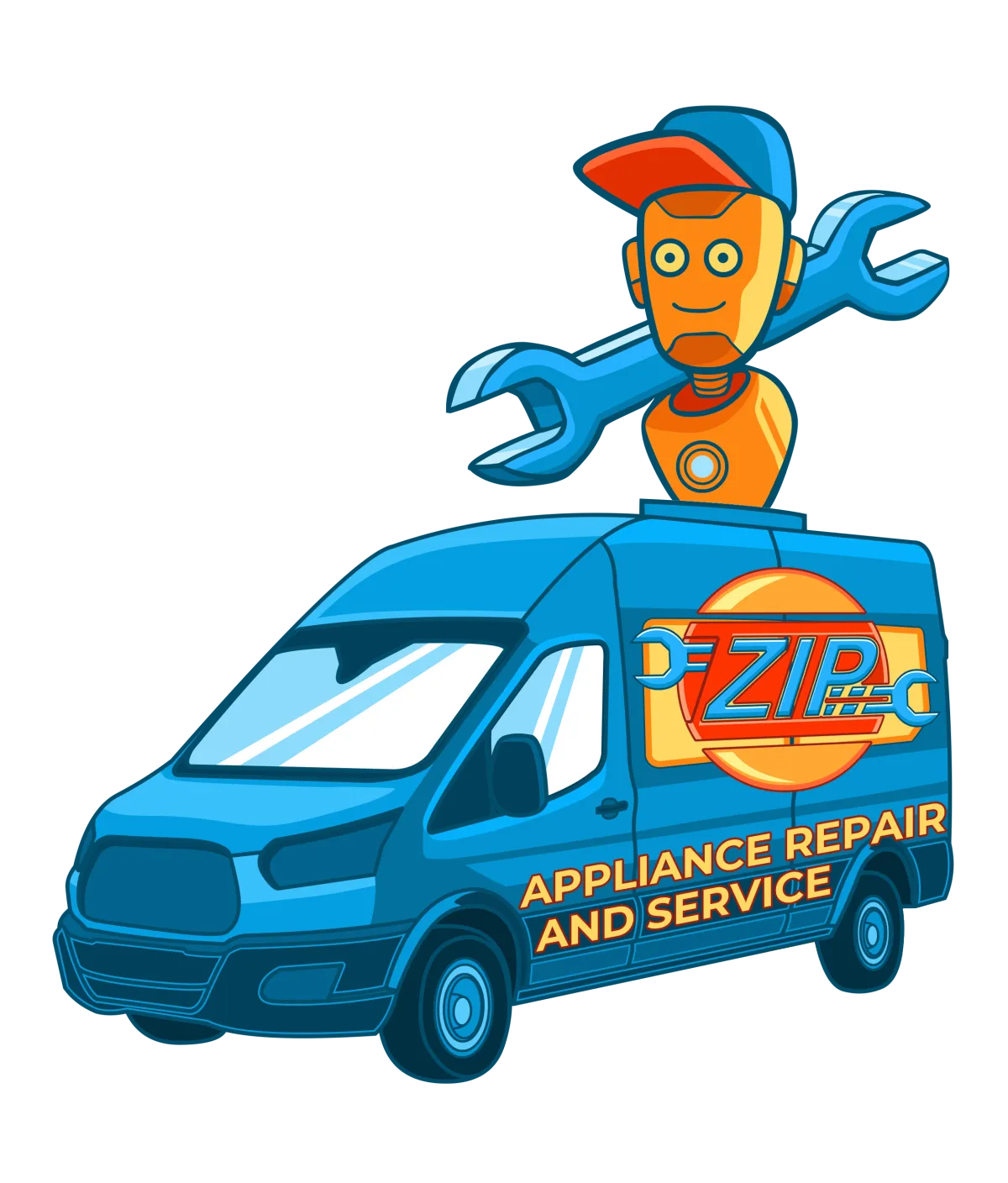Phone: (559) 272-4265
Appliance Repair Tips For Bakersfield, CA Residents

Dryer Not Heating Troubleshoot and Repair Like a Pro
"When your dryer stops heating, don’t sweat it—learn to troubleshoot and repair like a pro for a hassle-free fix." - Appliance Boss
Introduction
The Frustration of a Dryer Not Heating
A dryer not heating can be an unexpected hurdle in your day. Piles of damp clothes and interrupted routines make it a nuisance for any household. Beyond inconvenience, this issue can also signify deeper mechanical problems that require attention.
Why Learning to Troubleshoot Saves Time and Money
By understanding the basics of dryer repair, you gain the ability to address minor problems without immediately resorting to professional help. Troubleshooting not only saves money on service calls but also prevents small issues from escalating into costly repairs.
Understanding How Your Dryer Heats
The Basics of Dryer Heating Mechanisms
At its core, a dryer uses electricity or gas to generate heat. This heat is distributed by a fan system to remove moisture from clothes. The process is controlled by various sensors and thermostats that ensure consistent and safe operation.
Key Components Involved in Heating
The heating system comprises key parts such as the heating element, thermal fuse, thermostats, and control board. Each component plays a vital role, and a failure in one can disrupt the entire heating process.

Common Causes of a Dryer Not Heating
Power Supply Issues
Dryers rely on a steady and sufficient power supply. A tripped circuit breaker or a disconnected power cord might seem trivial but can halt operations.
Faulty Heating Element
The heating element is responsible for producing the necessary heat. Over time, wear and tear or electrical surges can damage this crucial part.
Blown Thermal Fuse
A thermal fuse acts as a safety device, cutting off power if the dryer overheats. If it blows, the dryer will no longer produce heat, even if other components are functioning correctly.
Malfunctioning Thermostat
The thermostat regulates the dryer’s temperature. If it malfunctions, the heating system may fail to operate, leaving clothes damp.
Clogged Ventilation System
Lint and debris can accumulate in the vent system, blocking airflow. This not only reduces heating efficiency but can also pose a fire hazard.
Safety First Before Troubleshooting
Unplugging the Dryer and Turning Off Power
Always disconnect your dryer from the power source before inspecting or repairing it. This precaution prevents accidental electrical shocks or injuries.
Wearing Protective Gear
Use safety gloves and glasses to protect yourself from sharp edges, heat, or debris during repair work.
Using Proper Tools for Diagnosis
Invest in tools like a multimeter, screwdrivers, and pliers. These tools are essential for safe and efficient troubleshooting.
Troubleshooting Steps for a Dryer Not Heating
Checking the Power Connection
Ensure the dryer is plugged in securely. Examine the cord for fraying or damage, and verify that the outlet is supplying power.
Inspecting the Circuit Breaker
Check your home’s circuit breaker panel. A tripped breaker might be the root cause of your dryer’s malfunction.
Examining the Heating Element
Locate the heating element and inspect it for visible damage or breaks. Test its continuity using a multimeter to confirm functionality.
Testing the Thermal Fuse
Remove the thermal fuse and use a multimeter to check if it has blown. Replace it if no continuity is detected.
Dealing with Common Dryer Problems
Diagnosing a Burnt-Out Heating Element
Signs of a burnt-out element include no heat or uneven drying. Replacing the element is straightforward but requires attention to detail.
Clearing Blocked Vents and Filters
Regularly clean the lint trap and exhaust vents to ensure optimal airflow. Use a vacuum or brush to remove accumulated debris.
Replacing a Malfunctioning Thermostat
A faulty thermostat can be swapped out with a new one. Be sure to use an exact replacement model for compatibility.
Identifying Faulty Wiring
Frayed or damaged wiring can interrupt the heating cycle. Inspect the dryer’s internal wiring and replace damaged sections carefully.
Advanced Troubleshooting Tips
Using a Multimeter to Test Components
A multimeter helps diagnose electrical issues by measuring continuity and resistance in parts like the heating element and thermal fuse.
Understanding Error Codes in Modern Dryers
Modern dryers display error codes that indicate specific issues. Consult your user manual to decode these messages for targeted repairs.
When to Consult the User Manual
Your dryer’s manual is a treasure trove of information. Use it to locate components, understand error codes, and follow maintenance guidelines.
Repairing Like a Pro
Replacing a Damaged Heating Element
Carefully remove the old heating element and replace it with a compatible model. Reassemble the dryer and test its functionality.
How to Safely Install a New Thermal Fuse
Disconnect the old fuse and install the replacement securely. Ensure all connections are tight and in the correct position.
Cleaning the Dryer Vent System Effectively
A clean vent system is vital for performance. Use a flexible brush or vent-cleaning kit to remove deep-seated lint and debris.
Preventative Maintenance for Your Dryer
Regular Cleaning to Avoid Future Issues
Clean the lint filter after every load and vacuum the vent system monthly to keep your dryer running smoothly.
Tips to Keep the Heating System in Top Shape
Inspect components periodically for wear and replace them as needed. Avoid overloading the dryer to reduce strain on its heating system.
When to Call a Professional
Recognizing Problems Beyond DIY Repair
If the dryer emits unusual noises, smells, or fails to respond entirely, it’s time to bring in a professional technician.
Choosing the Right Repair Service
Look for certified and experienced repair services that specialize in dryers. Read reviews and seek recommendations for reliable options.
Conclusion
Empowering Yourself with Knowledge to Fix a Dryer
Learning to troubleshoot and repair your dryer equips you with invaluable skills. It also saves time, money, and stress in the long run. By understanding the common causes of a dryer not heating and following practical repair steps, you can handle many issues with confidence.
Staying Proactive to Prevent Future Issues
Regular maintenance and prompt repairs are the keys to extending the life of your dryer. Stay proactive, clean vents frequently, and inspect components periodically to ensure consistent performance for years to come.
If you need professional assistance or encounter a problem beyond DIY repair, Zip Appliance and Plumbing Repair is here to help. Visit us at www.ziprepairservice.com or give us a call at Phone: (661) 387-2282. Our experts are ready to restore your dryer and provide peace of mind.

Dryer Not Heating Troubleshoot and Repair Like a Pro
"When your dryer stops heating, don’t sweat it—learn to troubleshoot and repair like a pro for a hassle-free fix." - Appliance Boss
Introduction
The Frustration of a Dryer Not Heating
A dryer not heating can be an unexpected hurdle in your day. Piles of damp clothes and interrupted routines make it a nuisance for any household. Beyond inconvenience, this issue can also signify deeper mechanical problems that require attention.
Why Learning to Troubleshoot Saves Time and Money
By understanding the basics of dryer repair, you gain the ability to address minor problems without immediately resorting to professional help. Troubleshooting not only saves money on service calls but also prevents small issues from escalating into costly repairs.
Understanding How Your Dryer Heats
The Basics of Dryer Heating Mechanisms
At its core, a dryer uses electricity or gas to generate heat. This heat is distributed by a fan system to remove moisture from clothes. The process is controlled by various sensors and thermostats that ensure consistent and safe operation.
Key Components Involved in Heating
The heating system comprises key parts such as the heating element, thermal fuse, thermostats, and control board. Each component plays a vital role, and a failure in one can disrupt the entire heating process.

Common Causes of a Dryer Not Heating
Power Supply Issues
Dryers rely on a steady and sufficient power supply. A tripped circuit breaker or a disconnected power cord might seem trivial but can halt operations.
Faulty Heating Element
The heating element is responsible for producing the necessary heat. Over time, wear and tear or electrical surges can damage this crucial part.
Blown Thermal Fuse
A thermal fuse acts as a safety device, cutting off power if the dryer overheats. If it blows, the dryer will no longer produce heat, even if other components are functioning correctly.
Malfunctioning Thermostat
The thermostat regulates the dryer’s temperature. If it malfunctions, the heating system may fail to operate, leaving clothes damp.
Clogged Ventilation System
Lint and debris can accumulate in the vent system, blocking airflow. This not only reduces heating efficiency but can also pose a fire hazard.
Safety First Before Troubleshooting
Unplugging the Dryer and Turning Off Power
Always disconnect your dryer from the power source before inspecting or repairing it. This precaution prevents accidental electrical shocks or injuries.
Wearing Protective Gear
Use safety gloves and glasses to protect yourself from sharp edges, heat, or debris during repair work.
Using Proper Tools for Diagnosis
Invest in tools like a multimeter, screwdrivers, and pliers. These tools are essential for safe and efficient troubleshooting.
Troubleshooting Steps for a Dryer Not Heating
Checking the Power Connection
Ensure the dryer is plugged in securely. Examine the cord for fraying or damage, and verify that the outlet is supplying power.
Inspecting the Circuit Breaker
Check your home’s circuit breaker panel. A tripped breaker might be the root cause of your dryer’s malfunction.
Examining the Heating Element
Locate the heating element and inspect it for visible damage or breaks. Test its continuity using a multimeter to confirm functionality.
Testing the Thermal Fuse
Remove the thermal fuse and use a multimeter to check if it has blown. Replace it if no continuity is detected.
Dealing with Common Dryer Problems
Diagnosing a Burnt-Out Heating Element
Signs of a burnt-out element include no heat or uneven drying. Replacing the element is straightforward but requires attention to detail.
Clearing Blocked Vents and Filters
Regularly clean the lint trap and exhaust vents to ensure optimal airflow. Use a vacuum or brush to remove accumulated debris.
Replacing a Malfunctioning Thermostat
A faulty thermostat can be swapped out with a new one. Be sure to use an exact replacement model for compatibility.
Identifying Faulty Wiring
Frayed or damaged wiring can interrupt the heating cycle. Inspect the dryer’s internal wiring and replace damaged sections carefully.
Advanced Troubleshooting Tips
Using a Multimeter to Test Components
A multimeter helps diagnose electrical issues by measuring continuity and resistance in parts like the heating element and thermal fuse.
Understanding Error Codes in Modern Dryers
Modern dryers display error codes that indicate specific issues. Consult your user manual to decode these messages for targeted repairs.
When to Consult the User Manual
Your dryer’s manual is a treasure trove of information. Use it to locate components, understand error codes, and follow maintenance guidelines.
Repairing Like a Pro
Replacing a Damaged Heating Element
Carefully remove the old heating element and replace it with a compatible model. Reassemble the dryer and test its functionality.
How to Safely Install a New Thermal Fuse
Disconnect the old fuse and install the replacement securely. Ensure all connections are tight and in the correct position.
Cleaning the Dryer Vent System Effectively
A clean vent system is vital for performance. Use a flexible brush or vent-cleaning kit to remove deep-seated lint and debris.
Preventative Maintenance for Your Dryer
Regular Cleaning to Avoid Future Issues
Clean the lint filter after every load and vacuum the vent system monthly to keep your dryer running smoothly.
Tips to Keep the Heating System in Top Shape
Inspect components periodically for wear and replace them as needed. Avoid overloading the dryer to reduce strain on its heating system.
When to Call a Professional
Recognizing Problems Beyond DIY Repair
If the dryer emits unusual noises, smells, or fails to respond entirely, it’s time to bring in a professional technician.
Choosing the Right Repair Service
Look for certified and experienced repair services that specialize in dryers. Read reviews and seek recommendations for reliable options.
Conclusion
Empowering Yourself with Knowledge to Fix a Dryer
Learning to troubleshoot and repair your dryer equips you with invaluable skills. It also saves time, money, and stress in the long run. By understanding the common causes of a dryer not heating and following practical repair steps, you can handle many issues with confidence.
Staying Proactive to Prevent Future Issues
Regular maintenance and prompt repairs are the keys to extending the life of your dryer. Stay proactive, clean vents frequently, and inspect components periodically to ensure consistent performance for years to come.
If you need professional assistance or encounter a problem beyond DIY repair, Zip Appliance and Plumbing Repair is here to help. Visit us at www.ziprepairservice.com or give us a call at Phone: (661) 387-2282. Our experts are ready to restore your dryer and provide peace of mind.
If your dryer has been giving you problems, contact Zip Appliance Repair & Service at (661) 387-2282

Appliance Repair In A Zip
If you need a dryer repair call our Team at (661) 387-2282, or visit our online scheduling page to request service.
Appliance Repair
Plumbing Repair Services
HAVE A QUESTION, CALL (661) 387-2282

Online Offers
Take advantage of our online discount offers - save time and money...

Residential & Commercial appliances
See what our company can do for you

Appliance Repair Tips
If your appliance is not working properly...

1405 Commercial Way ste 100
Bakersfield, CA 93309
Lic # 1116346
Equipment We Sevice
- A Call To Confirm Your Appointment Time
- A Email Detailing Your Assigned Technician
- Information Needed Before The Repair Can Be Started
- An Estimate Of Work To Be Done
© 2025 ZIP APPLIANCE REPAIR & SERVICE LLC








